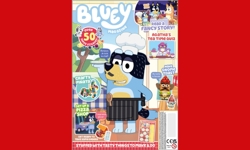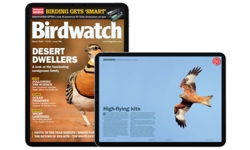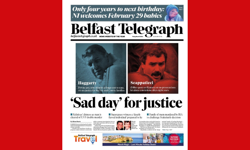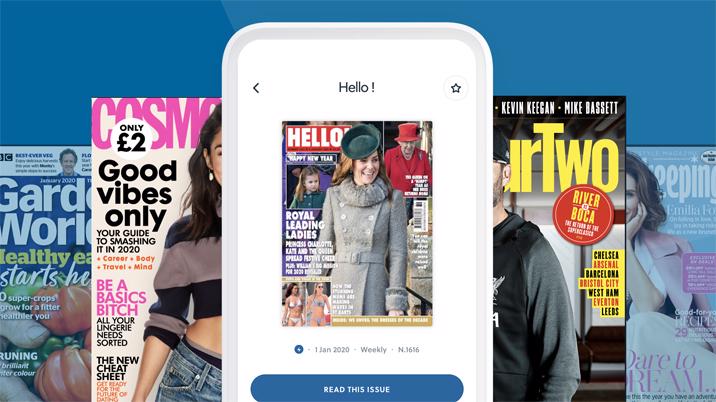
Q: How can publishers improve the performance of their digital editions?
A:
There are different ways to look at this. Publishers can add rich content (such as audio, video and images) to the text, or they can partner with a technology company, such as ours, which can provide technical expertise in the form of an information streaming platform, or of course they can do both.In terms of developing more formats, I think publishers are always looking for new ways to distribute their content: newsletter, video, audio, articles, magazines, journals, etc… There are many ways to consume the same content, but what could certainly be improved are the ways these channels complement each other, so that users can switch from one type of content to another seamlessly.
Thanks to growing collaboration between publishers and digital platforms, we’re developing those kinds of experiences to make them as good as they can possibly be.
Q: Why should publishers put their titles on 'all-you-can-read' platforms?
A:
The information market is navigating through an economic crisis right now. People are drowning in a media ocean with lots of apps demanding our attention. We’re also asking them to pay for information that looks free on the web. I say that it looks free but the fact is that quality has a price. That’s a message we should all spread.Information streaming platforms are a way to develop new audiences and reconnect people to paid-for content. On top of that, we provide technical tools and opportunities to develop new ways to consume content.
In a nutshell, information streaming platforms bring publishers additional revenue, a wider audience and a unique digital experience.
Q: How can publishers benefit from reader content-consumption analytics?
A:
As we exclusively distribute paid-for publications, we have a deep understanding of how people read their magazines. In the paper world, you sell the magazine and then never know how people will read it. But we can tell publishers which articles people enjoyed the most and even which page is the most read.Even more interesting for a publisher is that they can discover how people read: after a publication about news, would people go for leisure or another type of news publication? This information helps publishers better understand the complexity of their readers.
Q: How are people's digital reading habits changing?
A:
The information industry is dynamic and I think it helps to bring new experiences to people, whether that’s through newsletters, podcasts, videos, conferences or other media. New formats are popping up every day.But the fact is, people are now less willing to pay for information, and our main challenge is to persuade people that it’s worth paying for quality information again. Consumers can read lots of information for free, but is it always quality information? More and more publishers are turning to paywalls or finding other ways to monetise content, which will make it harder to find great content for free.
This is why, as an industry, we collectively need to show consumers the value of paying for information again, whether it’s news, educational or leisure content. Curiosity and passion are what make us more human. That is why I believe information streaming platforms can help to reconnect people to great content.
Q: How are 'all-you-can-read' services, like Cafeyn's, evolving?
A:
We want to become the go-to information streaming platform. It means we want to develop even more the way people can access information: by articles, by audio and by film. From traditional publishers to pure players, there are a lot of media to find and welcome on Cafeyn.With Cafeyn, our ambition is to develop new formats, so we can adapt our content to all kinds of reading habits. That’s why we’re moulding our product from a digital newsstand into an information streaming platform.
Q: What will the magazine sector look like in five years' time?
A:
I think the future is exciting.Journalists and publishers are key to the future. We talk about different formats and media but at the end of the channel, there is a journalist who works really hard to find and deliver interesting stories. Written content may be the classic way to consume news, but tomorrow, if publishers decide to develop audio and video to add new experiences to the same written content, it means we’ll need more journalists or, if not, we’ll need to ask journalists to change the way they do their jobs. This is not so easy.
I strongly believe in a positive future. People who value quality content are ready to pay for it. In five years’ time, I believe people will find it easier to navigate the media ocean and escape from their bubble filters.
Together, with publishers, we need to work closely to design complementary experiences.
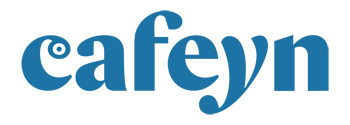
About us
Cafeyn (ex LeKiosk) was formed in 2006. Our ambition, driven by a deep passion for the media, has been to reconnect readers to the content that is relevant to them, by offering an ultra high-performance platform, based on advanced technology and backed up by a team of more than 90 people. With our expertise and network of strategic partners, the platform offers hundreds of titles, news and magazines, accessible via mobile app or PC.
We are looking to accelerate our international expansion over the next two years. Since our inception fourteen years ago, we have continued to rapidly innovate the way we promote information streaming at a time when the industry is reinventing itself and the way the general public consumes information is changing.
Website: www.cafeyn.co



